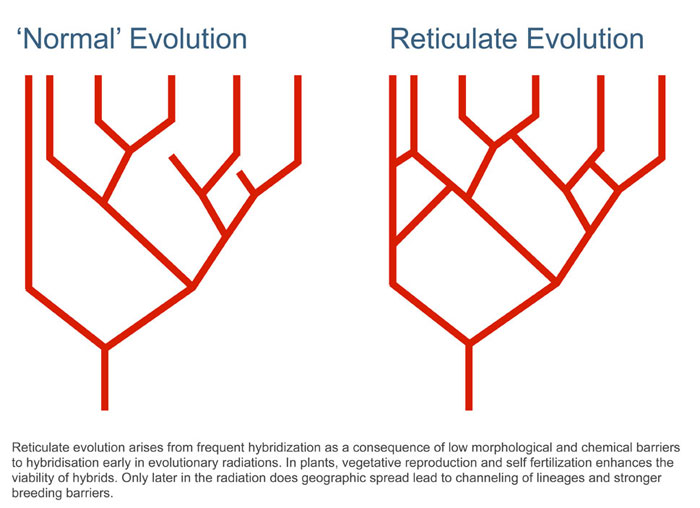Systematics
Reticulate EvolutionReticulate evolution (Sylvester-Bradley, 1977) arises from frequent low levels of morphological and chemical barriers to hybridisation early in evolutionary radiations (Boulter et al., 1988). In plants self fertilization and vegetative reproduction enhances the long-term survival of such hybrids, even when they might be initially sterile, until such time as fertile offspring can be formed. Only later in the radiation does geographic spread lead to channeling of lineages and higher breeding barriers. This pattern of evolution has been invoked to account for the high levels of morphological intergradation seen in many trochodendroid and platanoid leaf forms in the early Late Cretaceous, as well as pollen grains attributable to the basal 'eudicots' (Spicer, 1986; Grimm and Denk, 2008, 2010; Hofmann et al., 2011). Through molecular studies (Sang et al., 1995; Linder and Rieseburg, 2004) reticulate evolution is now recognised to have played a significant role in the evolution of many plant and animal groups, including humans (Jackson et al., 2005).
|

